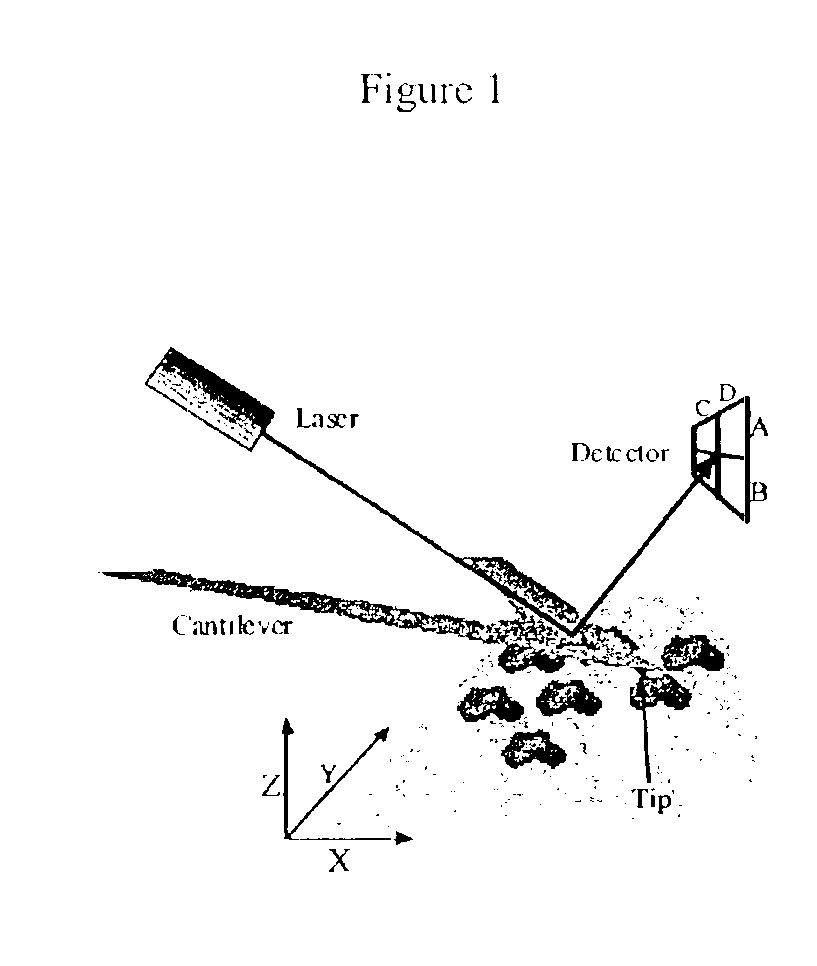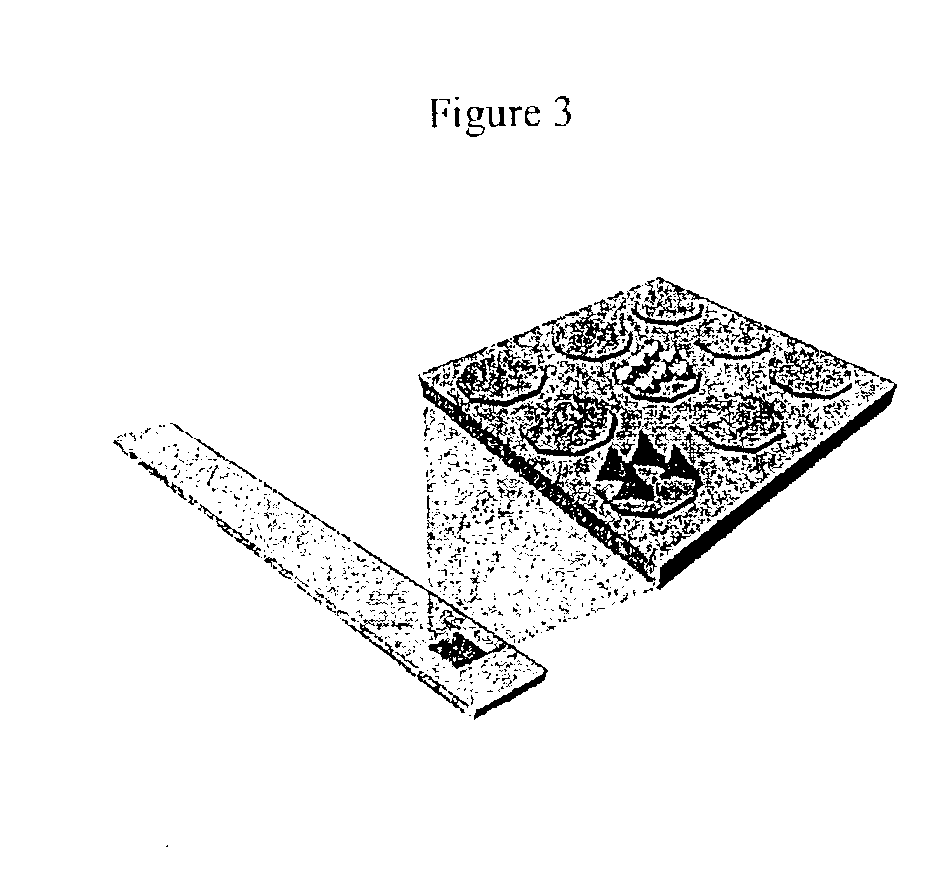Device and method of use for detection and characterization of pathogens and biological materials
a technology for pathogens and biological materials, applied in the detection and characterization field of pathogens, viruses, and other biological materials, can solve the problems of large number of deaths, economic hardship, and critical problems of pathogens, and achieve the effects of simple, rapid, sensitive and high throughput methods
- Summary
- Abstract
- Description
- Claims
- Application Information
AI Technical Summary
Benefits of technology
Problems solved by technology
Method used
Image
Examples
example i
[0048]With reference to FIGS. 2a-b, 4a-c, 5a, 6a-c, and 7a-c, CPV is detected by constructing a chip with anti-canine parvovirus monoclonal antibody deposited thereon, exposing the chip to a target sample, and then reading the chip using the AFM to determine whether CPV is bound to the chip surface.
[0049]The viral particles were prepared at a stock concentration of 0.3 mg / ml. Purified monoclonal antibody which recognizes the CPV capsid, A3B10 (0.9 mg / ml) was utilized. In another test run, purified anti-canine parvovirus monoclonal antibody (2 mg / ml) was obtained from a separate source (Custom Monoclonal International, California) with no observable change in results.
[0050]A chip with a protein G coated surface was used for the deposition of antibodies against CPV at specific regions. The domains were formed using the above described microjet method. The antibodies of the present embodiment were diluted to 0.1 mg / ml in 1×PBS before being deposited onto the surface using the microjet....
example ii
[0062]Anti-vaccinia and anti-adenovirus (control) antibodies were obtained from Biodesign. Vaccinia virus strain WR (American Type Culture Collection (ATCC) 1354) was grown in HeLa S3 (ATCC CCL-2.2) cells maintained on RPMI 1640 supplemented with 7% v / v fetal bovine serum and penicillin, streptomycin and fungizone. Near confluent S3 cells in Blake bottles were infected at a multiplicity of infection (MOI) of 0.2. Cells were collected when detachment became apparent in about 3 days. Virus was purified from frozen and thawed cells by successive cycles of sedimentation velocity and equilibrium density centrifugation. Stocks of purified virus were titered by end-point dilution assays and stored at −80C. The virus had a stock concentration of 107 pfu / ml. The purified rabbit anti-vaccinia (B65101R lot 8304600) and goat anti adenovirus hexon (B65101G, lot 4A01901) antibodies were divided into aliquots and stored at −20 C. until use.
[0063]To construct the vaccinia chips, the process of acti...
PUM
| Property | Measurement | Unit |
|---|---|---|
| bar size | aaaaa | aaaaa |
| bar size | aaaaa | aaaaa |
| diameter | aaaaa | aaaaa |
Abstract
Description
Claims
Application Information
 Login to View More
Login to View More - R&D
- Intellectual Property
- Life Sciences
- Materials
- Tech Scout
- Unparalleled Data Quality
- Higher Quality Content
- 60% Fewer Hallucinations
Browse by: Latest US Patents, China's latest patents, Technical Efficacy Thesaurus, Application Domain, Technology Topic, Popular Technical Reports.
© 2025 PatSnap. All rights reserved.Legal|Privacy policy|Modern Slavery Act Transparency Statement|Sitemap|About US| Contact US: help@patsnap.com



